J. David Core's Blog, page 20
September 2, 2014
Guest Post: Was Frankenstein a zombie, or a sci-fi cyborg? by Leah Rhyne
Today's guest post comes to us from Leah Rhyne. Leah is a Jersey girl who's lived in the South so long she's lost her accent...but never her attitude. After spending most of her childhood watching movies like Star Wars, Alien(s), and A Nightmare On Elm Street, and reading books like Stephen King's The Shining or It, Leah now writes tales of horror and science fiction. Her first novel, Undead America Volume 1: Zombie Days, Campfire Nights, released in the fall of 2012, and it’s sequel, No Angels, released in the fall of 2013. The final book in the trilogy is coming in 2014. She writes for LitReactor.com, The Charleston City Paper, and for herself at www.leahrhyne.com. Leah lives with her husband, daughter, and a small menagerie of pets. In her barely-there spare time, she loves running and yoga.
Her horror/sci-fi novel, JO, was released yesterday, and I will be reviewing it for my Halloween posting on this blog. Here's the blurb:Jolene Hall is dead – sort of. She can walk, think and talk, but her heart doesn't
beat and her lungs stopped breathing ages ago. Her body’s a mosaic of jagged wounds and stapled flesh.
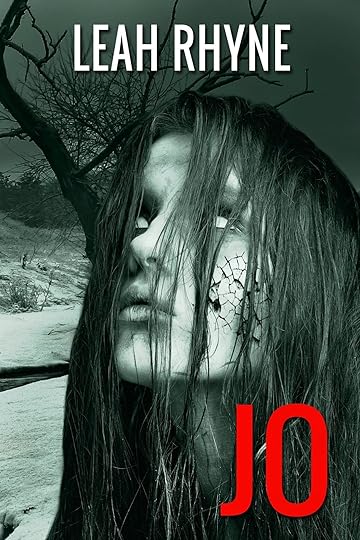
Jolene Hall has a choice: turn herself in to the authorities, led by a suspiciously handsome police officer, or team up with her roommate Lucy and her boyfriend Eli to find a way to save herself. To Jo, the choice is clear. She’d like to know who turned her into a monster, and she’d like to live to see another sunrise.
But that choice has drastic repercussions.
On a trip deep into the snowy White Mountains, to a hidden laboratory filled with danger and cadavers, Jo and Lucy find more reanimated girls. Part body, part machine, run by batteries and electricity, these girls are killers, created by a shadowy Order with a penchant for chaos...and murder.
To make matters worse, a photo on a wall of victims reveals Lucy is next in line to be "recruited” into this army of beautiful, walking corpses.
When Jo’s physical condition takes a turn for the irreparable, and the Order kidnaps those she loves most, she must sacrifice herself to save them all.
I began writing my novel, JO, after a dream in which a dead girl appeared in my old college dorm room, asking if I could smell how dead she really was. The dream, while mildly disturbing, was entertaining enough that an idea grew for a girl who was transformed into a semi-cyborg-monster-thing, and the how’s and why’s obsessed me for the next year and a half while I wrote and edited, wrote and edited.
Once the book was complete and I began the “how shall I publish this one” discussion in my head, I began reaching out to agents.
“Nope,” I heard back, on more than one occasion. “JO is just another zombie book, and we’re all full up on zombies.”
Well, no, I thought. Not really. She’s more like an updated, modern-day Frankenstein monster. In fact, while writing the book, the working title, thanks to a comment by a friend, was Pretty Frankenstein (which I dropped in respect to copyright laws and such).
My own clear miscommunications about my book’s intent aside, this response led me to the question: was the Frankenstein monster a zombie? Or was he more what I imagined: an old-school cyborg, running on electricity and just begging for an updated telling?
Let’s look at the evidence.
Dr. Frankenstein was a (mad) scientist with dreams of bringing a man back to life. To achieve his goal, he surgically spliced together body parts of different people who died from different causes, and (somehow) wired him up for electricity. We all know the brain was the final piece, and (somehow) that abby-normal brain was chosen instead of a normal one.
The monster lay on a table, all sewn together and awaiting a spark to wake him up. That spark came in the form of lightning – electricity. Somehow, deep inside his body, he was wired for electricity, as evidenced by the metal knobs on Boris Karloff’s neck in the 1931 movie version.
Once awake, the Frankenstein monster is hardly zombie-like. Though he grunts and groans and lumbers about, there are thought processes evident in his actions. The little girl and the flower are the best examples, but so are his anger, his rage. He’s not a mindless beast trying to eat his way through all the brains in town. No. His anger is directed at the man who created this hellish existence for him, and his fear becomes palpable when he’s chased by an angry mob.
The zombies I know of are all pretty mindless. Their focus is on one thing: food. Nowhere in the Frankenstein book or movies do we ever even see the monster eat.
I think the answer is clear: Frankenstein by Mary Shelley is an early work of sci-fi that could beat even Jules Vern or Orson Wells at their own game. Robot-man runs amok is just as cool as 20,000 Leagues Under the Sea, at least in my opinion. The monster himself is merely a cyborg, and a sad one at that.
Those are the ideas I tried to capture in JO. I’d love to share those ideas with you, and hear back from you what you think!
Published on September 02, 2014 07:56
August 25, 2014
Book Review: Fire Sign by M. A. Petterson
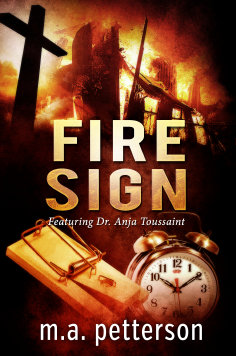 Dr. Anja Toussaint is a woman with secrets. Large areas of her skin are covered in burn scars, yet for reasons known only to her, she is compelled by fire. As the arson investigator for the police department in an anonymous city under the Fire Marshal’s office of an un-named state, she utilizes her impressive knowledge of the mechanics of fire and her almost empathetic understanding of the arsonist mentality to stop and to hopefully capture those who are pathologically driven to burn things.
Dr. Anja Toussaint is a woman with secrets. Large areas of her skin are covered in burn scars, yet for reasons known only to her, she is compelled by fire. As the arson investigator for the police department in an anonymous city under the Fire Marshal’s office of an un-named state, she utilizes her impressive knowledge of the mechanics of fire and her almost empathetic understanding of the arsonist mentality to stop and to hopefully capture those who are pathologically driven to burn things. When the same timed and carefully-placed method is used to burn several churches, Anja is teamed with Sgt, Gil Dolan, a bitter and less-than-ept career cop who acts as her liaison so that she might have access to the evidence. The two have an unamicable history which colors their team dynamic in a way I’ve never encountered in fiction before.
Fire Sign by M. A. Petterson is a novella which serves as introduction to a series which promises to thrill and entertain for several novels to come. The characters are dark and nuanced in a way that makes them fascinating and realistic, but I doubt that I’d want to invite any of them to a picnic, but that’s okay. The descriptions of the fires and the explanations of the science are very well-handled. In a very short space, Petterson manages to build a complete world with solid back story, intricate office politics, and interesting possibilities for the future.
Petterson has firefighting training from time spent in the maritime services, although eye problems prevented M.A. from continuing to peruse it as a career. However clearly the training and experience “took” well enough that the book has a clear voice of authority.
They say that a story should only be as long as the space needed to tell it, and I generally agree, but I feel that Fire Sign may have been just a bit too short for its own good. While each page is well developed and fascinating, and even though the story has a completed arc, there were aspects which could have been better fleshed out. I also feel it could have benefited from a more thorough denouement. I don’t want to give anything away, but things happen to the Gil character during the climax that needed to be explained. Specifically, how did he get from point A to point B and then from B to C. He just seems to show up.
Petterson is donating a portion of each sale to several camps for burned children through a self-created charity called Anja’s Kids. Full disclosure, my own daughter was burned on her face at the age of five when a candle’s flame caught her hair. She has a large scar on her forehead which she can usually disguise with her bangs, but many other children are less fortunate. My daughter has attended one such camp in the past, and benefitted greatly. These camps offer burned children a safe place to share stories, build friendships and move on with the understanding that they are not alone. So, while I would normally complain that $2.99 is too much to charge for a novella this brief, given the objective and the destination of the funds, maybe Petterson is not charging enough.
You can purchase Fire Sign at Amazon, and you can find out more about Anja and Anja's Kids at http://www.mapetterson.com/ The next book in the series, Soot Angel, is due in September.
Excerpt
O’Reilly joins me as I sit in the observation booth. The burn-building is packed with closed-circuit television cameras and microphones. I intend on monitoring Dolan carefully. I don’t want to kill the pathetic sergeant, just motivate him to scuttle off somewhere far from me. “Friend of yours?” O’Reilly asks. I just smile and activate the cameras and mikes. Every hallway and every room is now portrayed in gray on the monitors. They should spring for color, I think, but I know the budget is tight. Dolan stands alone in the vacant hallway, staring down a simulated motel hallway lined with doors on either side. I can hear him breathing through the mask, calmly and evenly. That will soon change.I toggle the switch initiating the exercise. A sudden whoosh breaks the silence as flames gush out of a doorway halfway down the hall. “Oh, yeah,” Dolan says. “Let the party begin.” He strides to the first door and rattles the knob, but it is locked. Then he slams the Halligan tool between the door and sill and wrenches it open. I watch his progress on another monitor. “Hey,” he calls out. “Anyone here?” He sweeps the room quickly, looks inside the bathroom closet, but the room is empty. He jogs back into the hall. The air roils with smoke now. Dolan reaches another door, pounds on it, tries the knob. The door swings open. He enters and spots a figure in the corner, slumped in an overstuffed chair, long auburn hair drooping over the head. “Score one for the gipper,” Dolan says, racing to the rescue. He reaches down and soon finds he’s cradling a skeleton wearing a wig and dress. A cigarette dangles from bony fingers, touching the scorched armrest.
Published on August 25, 2014 13:06
August 18, 2014
Author Interview: Elise Abram, author of The Revenant
 Elise Abram
Elise AbramToday I am taking part in a blog tour for Elise Abram whose new book, The Revenant, came out on the tenth of July. Elise describes her story as a YA paranormal novel set in Toronto, Ontario, Canada. Zulu is a revenant, killed and resurrected more than 100 years ago. His only companions are Morgan the Seer and Kat, a modern teen who can see auras. Together they work to save the people in danger in The Seer's dreams. But when Morgan, a powerful necromancer is raised from the dead, the trio realize the people most in need of saving are themselves.
Teacher of English and Computer Studies by day, wife and mother by night and author whenever she can steal some time, Elise Abram is the proud author of Phase Shift, The Mummy Wore Combat Boots, and Throwaway Child, available on Amazon and KoboBooks. She pens a blog about literature, popular culture and the human condition whenever the muse moves her at eliseabram.com.
And now, here's our interview.
Who are your influences?Anne Rice, Cathy Reichs, and Margaret Atwood would have to be my biggest influences. Rice for her descriptive prose, Reichs for making science and technology accessible and Atwood for her skill at incorporating contemporary themes in her writing. And I can't forget Stephen King for modeling how to write about the gore.
When did you begin writing?My first memory of writing was winning an award for my rendition of Snow White and the Seven Dwarves in grade 2. I also remember reading a book about kids who find a treasure map which sends them on a quest in grade school that sparked me to write a similar tale, but I can't for the life of me remember the name of the book. Then there was the novel I tried to write in high school, but never finished. There was a period of a decade or more when the only writing I did was technical, essays and archaeological reports and such. It's only been about 12 or so years I've seriously tried to make it into a second career of sorts.
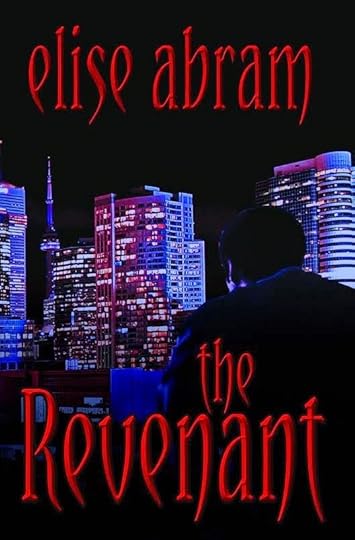 How do you come up with your stories, characters, character names, POV, etc?Many of my stories come from the world around me. Throwaway Child comes from the travesty of native residential schools in Canada. The Mummy Wore Combat Boots comes from the growing number of youth obsessed with the realistic world of gaming fantasy over reality. Phase Shift was influenced by "Star Trek", "Stargate", "Sliders" and the like that offer up duplicate worlds, change one variable, and explore what happens. I usually name my characters based on personality traits. Malchus, the antagonist in The Revenant, for example, comes from "mal" which means bad or unpleasant.
How do you come up with your stories, characters, character names, POV, etc?Many of my stories come from the world around me. Throwaway Child comes from the travesty of native residential schools in Canada. The Mummy Wore Combat Boots comes from the growing number of youth obsessed with the realistic world of gaming fantasy over reality. Phase Shift was influenced by "Star Trek", "Stargate", "Sliders" and the like that offer up duplicate worlds, change one variable, and explore what happens. I usually name my characters based on personality traits. Malchus, the antagonist in The Revenant, for example, comes from "mal" which means bad or unpleasant.If I think hard enough about a story, the point of view usually just comes to me. If ever a story isn't working, I might try on a different point of view to see if it flows better another way.
Do you work from an outline?I work from a vague outline. I sometimes jot ideas down when I think of them so I don't lose them. Most of the time I know where I want to begin, where I want to end and major plot points in the middle. The transitions from point to point usually fill themselves in as I write.
Tell me about your favorite scene in your novel. Since my favourite scene in The Revenant is the climax, I can't tell you too much about it because I don't want to reveal any spoilers. The climax is the archetypal battle between good and evil. I can tell you it involves a kidnapping, zombies, a sword fight, and someone dies, but that's about it. I still cry every time I read it.
Can you tell us a little about your writing philosophy?If you subscribe to the "you're not a real writer if you don't write every day" school of thought, you're only going to tear away at your confidence. The truth is, life happens. Everyone has to deal with school or work or family responsibilities and days, weeks, even months may go by without ever writing a word. Even though you never sit to put proverbial pen to paper, it's okay as long as you don't abandon your story. I'm always writing in my head, trying to visualize scenes and listen for character dialogue. When I finally sit down to write, the story seems to write itself. Thanks to Nanowrimo, I've also trained myself not to worry about editing as I write. My goal is to finish the story and worry about the editing later.
Have you ever tried writing in any other genres?Though I prefer writing science fiction and paranormal/supernatural, I've also written police procedurals. Palmer Richardson, one of my Phase Shiftcharacters, is a forensic anthropologist, someone who figures out what happened to a person in life, from their bones after death. Because he freelances with the Metropolitan Toronto Police Department, it's really easy to take his skill-set and use them in real-life scenarios to solve murders. He usually teams up with Detective Constable Michael Crestwood, who pops up in my sci-fi archaeology stories as well.
Do you have any interesting writing-related anecdotes to share?I often think back on my writing "career" and think about how much more difficult my accomplishments to date would have been without the use of the Internet. But more than the research, I want to talk about the connectivity of the digital age, and I don't mean the role it played in helping me find a publisher. People, other authors and bloggers, have been amazing in their support. I think this really speaks to community and the connectivity of the world. All you have to do is reach out; the worst that will happen is someone says "no." In planning my blog tour, the amount of bloggers--total strangers--who offered to open up their web pages to me, be it in an interview such as this one, a guest blog post, or a much needed review, the response has been nothing short of welcoming, warm, and supportive, and I am truly grateful to everyone who offered a hand, no matter how small, along the way.
Excerpt:
Barb grunted a low grunt. Malchus heard something that sounded like cracking bone. He stood and walked slowly around to face Barb. She was working to frantically shove the remnants of whatever she had in her hands into her mouth. Blood covered the lower half of her face and her hands and dripped down her forearms, off her elbows, and had begun to pool on the floor. The sleeves of her sweater, rolled up her arms and above her elbows, were saturated. Having pushed the last of whatever it was she had been eating into her mouth, Barb set to licking the blood off her fingers and then from her forearms. She rolled down her sleeves until they covered her hands, and then placed the material into her mouth and sucked the blood from them as well. “Barb!” Malchus said, sickened in spite of himself. Barb looked up at him, eyes wide with fear, the cuff of one of her sleeves still between her lips. “What are you eating?” he said, sounding calmer than the thump of Hal’s heart would indicate. “Rat.” The sweater cuff fell from her mouth when she spoke. She licked her lips, and as if realizing there was still blood to be had on her face, wiped her cheeks with the back of her hand, looked at it, then pressed it against her mouth and sucked.The Revenant is available at the following online locations: Amazon, B&N, Black Rose Publishing. You can follow Elise and her writings through her page on Goodreads.
Published on August 18, 2014 08:00
August 11, 2014
Book Review: The Case Against Atheism by Mike Dobbins
 Reading The Case Against Atheism: The Failure of Disbelief by Mike Dobbins was, for me, like reading a rebuttal to my own book, Believe It, You Know an Atheist. Where my book tries to explain to theists and other non-atheists, like Dobbins, what atheism actually is and why it isn’t the bugaboo they’ve been conditioned to mistakenly assume that it is, Dobbin’s book repackages and regurgitates many of the old theistic and spiritualistic tropes that turned most atheists against religion in the first place. In fact, any non-fair-weather atheist who reads Dobbins' book is going to find himself or herself on common ground, reading for the umpteenth time the same tired old fallacies he or she has encountered dozens if not hundreds of times before in Church, family gatherings, and Internet message boards.
Reading The Case Against Atheism: The Failure of Disbelief by Mike Dobbins was, for me, like reading a rebuttal to my own book, Believe It, You Know an Atheist. Where my book tries to explain to theists and other non-atheists, like Dobbins, what atheism actually is and why it isn’t the bugaboo they’ve been conditioned to mistakenly assume that it is, Dobbin’s book repackages and regurgitates many of the old theistic and spiritualistic tropes that turned most atheists against religion in the first place. In fact, any non-fair-weather atheist who reads Dobbins' book is going to find himself or herself on common ground, reading for the umpteenth time the same tired old fallacies he or she has encountered dozens if not hundreds of times before in Church, family gatherings, and Internet message boards. To be fair, on many pages Dobbins acknowledges that atheism is not an unreasonable conclusion. However, one gets the feeling that he is saying this only to dangle a carrot or extend an olive branch so the reader will be placated long enough to continue reading with an open mind – a characteristic which most theists seem to think atheists as a group lack.
Mechanically speaking, Dobbin’s book could be improved with a good edit. There are numerous typos and awkward phrasings as well as repetitive ideas and failings of parallelism which an extra set of eyes or two should have been able to catch. But the real failings in the book are in the arguments themselves. Dobbins targets a specific brand of militant anti-theism and strong atheism which really is a minority in the community. For this reason, most atheists reading the book will be insulted by a primary supposition that underlies the first three-quarters of the treatise; that atheism is the belief that there is no God. Yes, atheism can be the belief that God is non-existent, but for most atheists throughout modern history (at least since the time just prior to the American Civil War) atheism is not defined by what atheists do believe about God, but rather what we don’t believe.
Even if one accepts the premise that atheism is the belief that gods cannot exist, additionally even if one accepts Dobbins’ later assertion that the existence of something which could be called a soul exists and it has been proved, this is not sufficient to support the claim that atheism is a failed philosophy. Since atheism is the lack of a positive belief in deities, one would have to prove the existence of deities in order to claim that atheism fails. Dobbins never even attempts to do so.
It’s that final assertion, incidentally, that is the biggest failure in Dobbins’ attempt to demonstrate the failure in disbelief. After making such weak arguments for belief as noting that people who believe are sometimes altruistic or that atheism doesn’t speak to purpose (newsflash, it isn’t supposed to,) Dobbins presents an argument that the reality of the afterlife has been scientifically proven. Notwithstanding the fact that if such a discovery had been documented in a scientifically valid manner, it would have been front-page news and the focus of every 24 hour news channel for months (especially FoxNews,) Dobbins does take some time spelling out the circumstances behind his assertion.
It turns out that Dobbins is basing his claim on a study conducted at the University of Virginia School of Medicine by a Dr. Ian Stevenson which was published in The Journal of Scientific Exploration. The study is based on claims made by children that they were somebody else in a previous lifetime. The good doctor claims to have done case studies on several of these children and followed through on claims they made about past-lives which bore fruit.
This all sounds too good to be true, and would indeed be the final nail in the coffin of at least one aspect of atheism. The problem is it’s all much more dubious than Dobbins would have you believe. Turns out Dr. Stevenson actually founded the Society of Scientific Exploration which later published his work. That hardly qualifies as peer review. Moreover, the general consensus in the scientific community is that the Journal itself is nothing more than a clearing house for unsupportable woo.
Dobbins concludes by asking the atheist to consider if he or she is really happier than most theists and whether there is any virtue in trying to take away the faith than helps many persons get through their daily lives. Of course, one’s belief is not something one chooses, so even if it were true that faithful people are happier it is insulting to suggest that a desire to be happy can or should influence one’s core beliefs. Additionally, the search for truth doesn’t and shouldn't stop when it becomes inconvenient.
As apologetics go, Dobbins’ book is not the worst thing out there. He at least attempts to treat most atheists respectfully, and he avoids overt proselytizing and pro-monotheistic bias. However, as far as crafting a solid argument to support the book’s main premise, it just isn’t that successful.
Excerpt Open-minded atheists or not, you command humanities love, respect, and compassion the same as any other human being on our tiny blue planet. I am fascinated by their arguments and opinions, support their right to free speech, fight efforts to vilify them, and have many who I consider friends. They have the same hopes, dreams, fears, needs, and wants as any other human. They cheer for their favorite sports team, seek to fall in love, support their brand of politics, and do good deeds in their community. Many seek justice and peace among peoples of the world. Many want to know if there’s a purpose to humanities existence, if universal moral codes exist, and how the universe came to be. Just like you and me, they strive to answer the big and small questions of life.
In the comparatively free and open society in the United States, I welcome the diversity of thought and spirited discussion that allows atheists and me to share ideas and criticisms in a respectful manner. Religious freedom is one of the cornerstones of our country. We have, I hope, progressed enough socially that most of us can keep an open mind, admit differences, and find common ground when it surfaces.
Yet, as many young atheists become more and more intolerant, and the tolerant atheist voices are silent or squeezed out, the new atheists place me and other tolerating individuals in a more indefensible position. Clearly, classical atheism should be and is tolerated by most in America, including me. But as more and more atheists become intolerant and embrace confrontational atheism, today’s atheism becomes difficult to tolerate. Just with any belief system, atheism too can radicalize and is doing so as I write. The more modern atheism asserts itself as ‘the truth’ and all others as ‘deluded’ the more it sounds like a fundamentalist religion that has lost its way.
On Amazon, Facebook, B&N, Goodreads.
Published on August 11, 2014 12:37
August 5, 2014
Fair Play is LIVE
 My latest full length book, Fair Play: A Lupa Schwartz Trilogy, is now available on Amazon. Now your Kindle can look as cool as mine.
My latest full length book, Fair Play: A Lupa Schwartz Trilogy, is now available on Amazon. Now your Kindle can look as cool as mine.Also, KJ Bryen's interview of me is live on her blog, and my interview with Judy Goodwin should go live on her blog this week as well.
That is all. Carry on.
Published on August 05, 2014 19:50
July 22, 2014
Fair Play: A Lupa Schwartz Trilogy
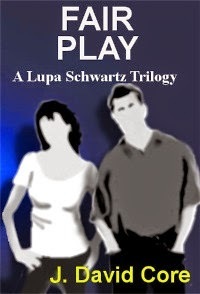 The next installment of the Lupa Schwart Mystery Series, Fair Play, is ready for publication. It will be released on my daughter's birthday, August 6 - her sweet sixteen.
The next installment of the Lupa Schwart Mystery Series, Fair Play, is ready for publication. It will be released on my daughter's birthday, August 6 - her sweet sixteen.Fair Play features three full length novellas, Overlord, Counterfeit, and Confessions of the Cuckold, each a stand-alone story in the Lupa Schwartz universe.
Cattleya Hoskin has settled into the Schwartz residence and into her new gig chronicling Schwartz’s exploits for Gamut Magazine. With cases running dry, she takes matters into her own hands and pushes Schwartz to investigate a case that has the entire country buzzing, the on-air poisoning of a reality game show contestant on Cattleya’s favorite TV program, Overlord. Schwartz next takes Cattleya undercover to investigate the death of a small-time store manager in their old stomping grounds of Paine County, Ohio. With a renewed passion for logic puzzles as fuel, can Cattleya solve the homicide before Schwartz, or are all of her attempts going to prove to be Counterfeit? Finally, is a bounty hunter ever supposed to share as much information on a former client as the unnamed protagonist in this peripherally related yarn? Was there ever even a murder plot to begin with, or was it all just the fanciful Confessions of the Cuckold?For the first time, I am releasing one of my books through KDP Select, which means it will only be available as an eBook through Amazon, however there will be a trade paperback version released 30 days later, and after 90 days I may or may not leave select, making Fair Play available in other electronic formats. A teaser of the first chapter is available to read here.
Published on July 22, 2014 11:14
July 13, 2014
Digital Book Day
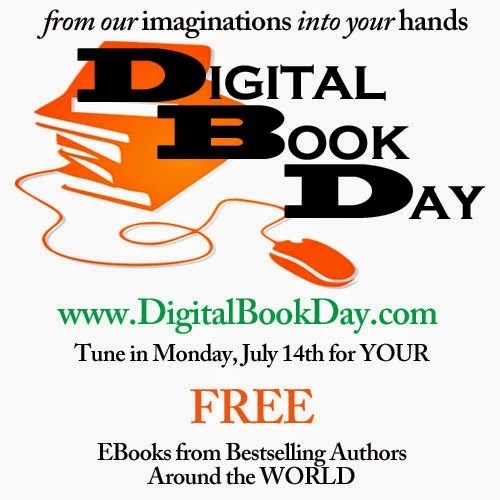 Monday, July 14 is the first ever Digital Book Day celebrating electronic format books with hundreds of free eBooks available to readers all over the world. The event is the brainchild of best-selling author, CJ Lyons, who describes the event as follows:
Monday, July 14 is the first ever Digital Book Day celebrating electronic format books with hundreds of free eBooks available to readers all over the world. The event is the brainchild of best-selling author, CJ Lyons, who describes the event as follows:We’ve gathered over 180 bestselling authors from around the world with one aim: to gift books to readers.
From our imaginations into their hands.
One site, one day, over one hundred free books for readers to choose from in a variety of genres. Some of them are advance reader copies, never offered before. Many are from authors they already know and love.
With so much turmoil in the publishing industry right now, isn’t it time to celebrate the people we couldn’t survive without? Our readers.You'll find free books available from such notable indie authors as JF (Joanna) Penn, Mark E. Cooper, and of course CJ Lyons herself.
To celebrate this event and in anticipation of the upcoming release of my newest Lupa Schwartz collection, Fair Play, I have decided to also make my book, Common Sense: A Lupa Schwartz Mystery, free for this one day as well. To access your free copy, simply click this link and enter promo code FREE at checkout.
Enjoy, and happy reading.
Published on July 13, 2014 20:30
June 10, 2014
Testify: A Lupa Schwartz Novella
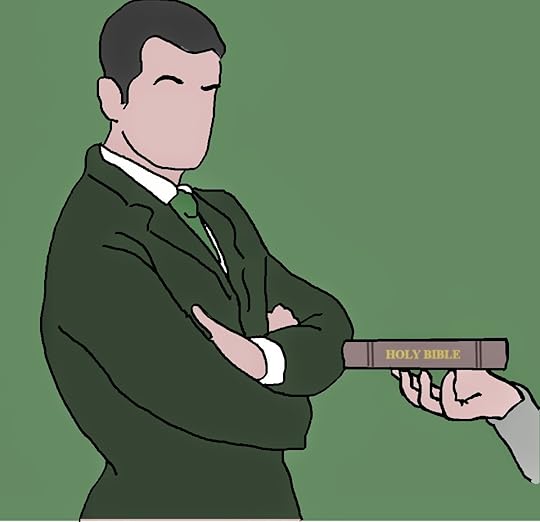
Today, I am posting a previously unpublished Lupa Schwartz novella entitled Testify. It tells the story of
George Bond, a farmer accused of murdering a city councilman who was attempting to pass legislation which would have prevented Bond from leasing his land to the oil companies which had moved into the area as part of a recent shale gas boon. There's little question that Bond did what he is accused of, but it's up to Schwartz to prove the motive before Bond is acquitted in a trial begun too hastily.
Schwartz and his chronicler, Cattleya Hoskin, venture deep into West Virginia Appalachia to help the prosecution and the local PD save face, but it's the mystifying way Schwartz handles his courtroom appearance at the conclusion that will leave you cheering.
This story will ultimately appear in the sixth Lupa Schwartz full length publication, but for now it's available free and in its raw, unedited. first-draft iteration for your reading pleasure. Maybe you can beta read. I welcome any and all comments on the story. To read the story, click here, or find the perma-link in the sidebar.
Enjoy!
Published on June 10, 2014 12:08
June 1, 2014
The Writing Process Blog Tour
 Livia HarperThe charming Livia Harper has invited me to participate in the Writing Process Blog Tour, a sort of game of tag that also works kind of like a chain mail. Here's Livia's information.
Livia HarperThe charming Livia Harper has invited me to participate in the Writing Process Blog Tour, a sort of game of tag that also works kind of like a chain mail. Here's Livia's information.When she’s not hanging out with her ginger husband and two stinky basset hounds, Livia Harper writes modern thrillers and mysteries in the vein of Megan Abbott’s Dare Me or Gillian Flynn’s Gone Girl. Her debut novel, Slain, tells the story of a teen girl murdered in a fundamentalist megachurch that’s full of secrets, and the fallen pastor’s daughter who must solve the crime. Slain will be released in August of 2014. Check out a free short story and sign up for updates at www.LiviaHarper.com.
Here is a link to the post where Livia tagged me (as well as two other authors you might also wish to check out) and described her own process. If you're feeling inquisitive, you can actually attempt to follow the chain all the way upstream to try and find the person who originated the tour. I walked it back about six or seven generations before I gave up. Maybe you're a little more curious than I.
The next step in the process is that I am to answer a set of questions about my process, and then I tag three other authors. So with no further ado...
Here are my responses:
1) What am I working on?
I have two projects in the works - which I mentioned in a recent post on my blog. The third installment of the Lupa Schwartz mysteries, Fair Play, is currently in beta. Meanwhile, I am creating the first draft of my first ever graphic novel, The Return of the Dragon.
2) How does my work differ from others of its genre?
My mystery novels are actually pastiche of the works of Arthur Conan Doyle and Rex Stout, so in that sense they aren't different. Of course, I don't directly parrot the motifs of those works, but the rough sketch - a genius detective with strong habits and opinions aided by an unctuous and loyal chronicler - is there. Several of the lesser tropes - a less capable police force, a housekeeper strongly involved in the day-to-day, a brother involved in a social organization, and others - are also worked into the canon.
However, my detective is more gregarious and lady-friendly. He's more openly political and willing to discuss his atheism. But the stories themselves are very much a throwback to the good ol' days of "fair play" mysteries. I present a puzzle for the reader to work out with the detective. All of the clues are there, and the solutions do not rely on information that was unavailable to the reader ever. So while the series is very much like mysteries from the golden age of dime novel mysteries, it really does stand out in today's procedural, multi-POV, danger-centric, story-arc-driven offerings.
3) Why do I write what I do?
My father was a huge reader and mystery fan. My first love was sci-fi, and I began my writing career trying my hand at writing something that Omni Magazine would publish. Ultimately, though, I came to appreciate Raymond Chandler and Ed McBain in a way that I never really enjoyed Asimov or Bradbury. Don't get me wrong, I admire Asimov and Bradbury, but their stories appeal to a more cerebral side of my admiration-checklist. Mysteries are just fun.
Although, to be totally honest, some of my stories I write just for the catharsis.
4) How does my writing process work?
Depends. What I try to do is write up a sketchy synopsis (some call that beats) which I then divide into chapters. The chapter ideas are then fleshed out in outline form, which I use to generate a first draft. Usually, though, it doesn't wind up going that way. Several times I have thought about a story for years before beginning the writing process with no story-ending in mind. For example, my novella, Wingman, began life as a short film idea, and I had no idea how that story would or could end before I decided to make it a novella and actually sat down and began writing.
Other times, I have a beginning and ending in mind, but no idea how I'm going to get from A to B. Those stories are a true journey of discovery, but since I know the end-game I have a loose structure to work with.
I also do a lot of research on the fly as I write, and on more than one occasion I have decided to shift the direction of a story based on some interesting factoid I picked up in my investigation.
Now as part of the rules for this hop, I get to tag three other authors who will be posting their replies to these questions next week. Please check out their sites and bookmark them, then you can read their replies next Monday.
Hazen Wardle
 Hazen wardle attended High School at Uintah High in Vernal Utah, and has since worked multiple jobs, mostly retail related, while chasing a college degree. Now working in the semiconductor business, Hazen has been actively pursuing his writing career. Currently he has one title professionally published, The Triumph Detective (triumphdetective.com) with 2 sequels in line and other titles in the works. His favorite genres to write are humorous mystery and science fiction. Visit http://smallmarkbooks.yolasite.com/ for more information. Hazen blogs occasionally on Goodreads. Check it out here.
Hazen wardle attended High School at Uintah High in Vernal Utah, and has since worked multiple jobs, mostly retail related, while chasing a college degree. Now working in the semiconductor business, Hazen has been actively pursuing his writing career. Currently he has one title professionally published, The Triumph Detective (triumphdetective.com) with 2 sequels in line and other titles in the works. His favorite genres to write are humorous mystery and science fiction. Visit http://smallmarkbooks.yolasite.com/ for more information. Hazen blogs occasionally on Goodreads. Check it out here. Jerold Last
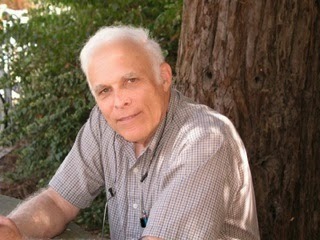 Jerold Last
Jerold Last
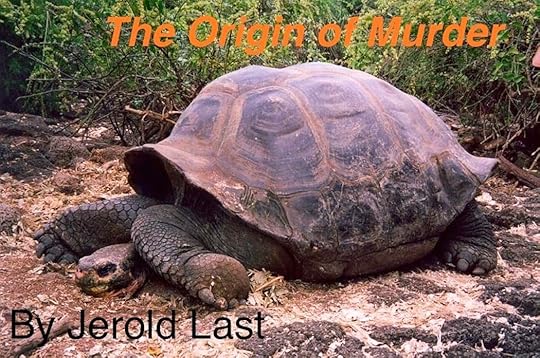 Jerold is a Professor of Pulmonary and Critical Care Medicine at the University of California's Medical School at Davis. Jerry writes fast paced hard-and softer-boiled mystery books that introduce readers to the Mercosur region of South America where he has lived and worked. Montevideo, Salta, Machu Picchu, and Iguazu Falls are characters in these books, and the novels portray these places as vivid and real. He lives in Northern California with his wife Elaine. http://rogerandsuzannemysteries.blogspot.com
Jerold is a Professor of Pulmonary and Critical Care Medicine at the University of California's Medical School at Davis. Jerry writes fast paced hard-and softer-boiled mystery books that introduce readers to the Mercosur region of South America where he has lived and worked. Montevideo, Salta, Machu Picchu, and Iguazu Falls are characters in these books, and the novels portray these places as vivid and real. He lives in Northern California with his wife Elaine. http://rogerandsuzannemysteries.blogspot.comMark Gardner
 Mark Gardner
Mark Gardner
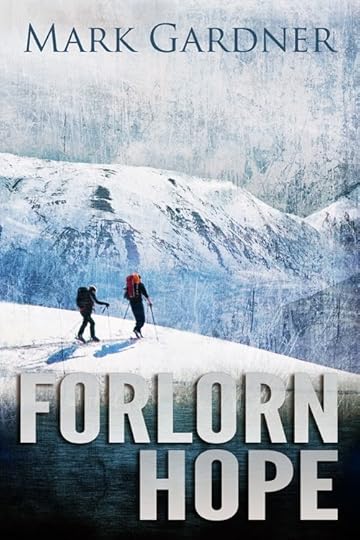 Mark Gardner lives in northern Arizona with his wife, two school-aged children and a black lab. Mark holds a degree in Computer Systems and Applications and is currently attending Northern Arizona University. Mark does his writing on an old Apple eMac and iPad utilizing Apple iWork Pages and iCloud. You can check out Mark's blog here. His books can be found for the kindle at his author page on Amazon here.
Mark Gardner lives in northern Arizona with his wife, two school-aged children and a black lab. Mark holds a degree in Computer Systems and Applications and is currently attending Northern Arizona University. Mark does his writing on an old Apple eMac and iPad utilizing Apple iWork Pages and iCloud. You can check out Mark's blog here. His books can be found for the kindle at his author page on Amazon here. Those are my taggies. Make sure to check out their blogs, websites and books.
Published on June 01, 2014 19:54
May 27, 2014
Author Interview: Ashanti Luke, Author of Nightfall
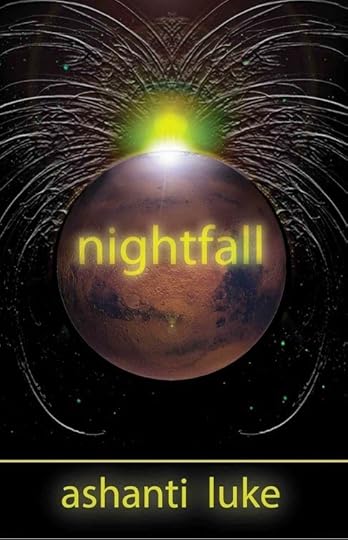 Today I am posting a recent email interview I conducted with Ashanti Luke. Ashanti studied world philosophy and religions, Creative Writing, and Professional Writing at the University of Southern California. After living in Los Angeles for 17 years and working in advertising and the entertainment industry, Ashanti moved back to his hometown of Richmond, Virginia where he worked for the US Census Bureau and as a personal trainer and tutor.
Today I am posting a recent email interview I conducted with Ashanti Luke. Ashanti studied world philosophy and religions, Creative Writing, and Professional Writing at the University of Southern California. After living in Los Angeles for 17 years and working in advertising and the entertainment industry, Ashanti moved back to his hometown of Richmond, Virginia where he worked for the US Census Bureau and as a personal trainer and tutor.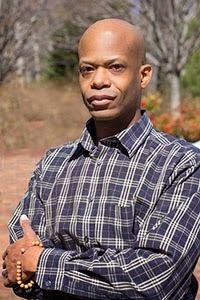 Ashanti LukeAshanti is the author of Kindred Spirits, Dusk and Nightfall and has had stories publishing in Kasma Science Fictionand in Horror, Humor, and Heroes. He has worked as a writing instructor for Richmond’s Podium Foundation and currently holds a position as an English professor. Ashanti currently lives in the outskirts of Richmond with his wife and four children. He is currently researching Dusk 2: Evensong, and it should be available by the beginning of 2015. Information can be found at his website, which is an artistic showcase for Dusk, Nightfall, and Evensong and contains audio samples of Dusk and Nightfall.
Ashanti LukeAshanti is the author of Kindred Spirits, Dusk and Nightfall and has had stories publishing in Kasma Science Fictionand in Horror, Humor, and Heroes. He has worked as a writing instructor for Richmond’s Podium Foundation and currently holds a position as an English professor. Ashanti currently lives in the outskirts of Richmond with his wife and four children. He is currently researching Dusk 2: Evensong, and it should be available by the beginning of 2015. Information can be found at his website, which is an artistic showcase for Dusk, Nightfall, and Evensong and contains audio samples of Dusk and Nightfall.Here's the interview:
· Who are your influences? Octavia Butler, Orson Scott Card, and Philip K Dick are my main sci-fi influences, but my writing also has heavy influence from Hong Kong Cinema, particularly old John Wu and Tsui Hark as well as stage plays like Les Miserables, Pinter’s Betrayal, and just about anything Tom Stoppard or David Mamet.
· When did you begin writing? I began writing when I was young, and I began outlining my first novel when I was 16, and I began drafting it when I was 19. I went to graduate school for writing, so I completed that novel (Kindred Spirits) for my thesis. My household, however, was inundated with storytelling as my mother was both an elementary school reading teacher and a professional storyteller.
· How do you come up with your stories, characters, character names, POV, etc? Many times I begin with a ‘what if’ or an interesting idea, and then I begin to build characters around that idea. I feel very strongly that the characters should make the story happen, and often the backgrounds for my characters come about because I need characters that would find themselves in (and often eventually out of) the situations that are put before them. I feel like any good story is character driven, and the more complicated the plot is, the more, let’s say ‘particular’ the characters have to be. I often say the more characters I am working with, the more real friends get ignored.As far as names go, I like the names of the characters to have some outside meaning without being obtrusive or necessary to the story. My characters also have various ethnic and national backgrounds, so many times their names are reflective of those backgrounds, or function as a part of their personal progression before we meet them in the story. As an example, in the story Aiwass in Nightfall, Johan Roeland DeGraaf is a Dutch Canadian who, in 1904 is a detective in the Providence, Rhode Island constabulary. He is charged with rescuing 14-year old H.P. Lovecraft from mysterious kidnappers, and because of the events of the story, becomes the inspiration for Inspector John Raymond Legrasse in Call of Cthulhu.
· Do you work from an outline? I work from an outline, but the average person would need the Rosetta Stone and an Orphan Annie decoder ring to make sense of most of my outlines. I tend to jot ideas down and pile ever more detailed information into the document until the story itself coalesces around it or it osmoses into a second document where I begin writing. It is a very organic, but necessary, process for me.
· Tell me about your favorite scene in your novel. There are so many scenes is Nightfall, but I would say my favorite scene in the collection is when Mori Mak, a young high school girl who delivers pizzas to support both herself and her alcoholic father fights off two would-be muggers using a martial arts training that is as lethal as it is colorful and unlikely.
· Can you tell us a little about your writing philosophy? As I mentioned before, I feel characters should always drive the narrative. I also believe in adding deeper meaning to the stories, but having that meaning not get in the way of the accessibility and ubiquitous humanity of the tale. I also believe very strongly in research. Good research and good characters can make even the most unlikely story seem believable.
· Have you ever tried writing in any other genres? Kindred Spirits is arguably a suspense thriller with science fiction elements. I tend to mix staples of other genres into science-fiction because I also believe that science fiction should ultimately be about humanity or the human condition. In that way, nothing that touches the human heart and elicits an emotion is off-limits. Nightfall contains a wide range of story types all under the veil of science fiction, and all with some relationship to the timeline and events in my novel Dusk, which is the first book of a trilogy. It is completely unnecessary to know the events in Dusk, but Nightfall and Dusk complement each other, and the stories in Nightfall lend insight to many of the themes, events, and characters in Dusk, as well as those that are forthcoming. I suppose the short version is even though I am a science fiction author, the science fiction I write is enhanced, I believe, by elements from many different genres.
· Do you have any interesting writing-related anecdotes to share? One thing that is interesting, I think, is that Duskbegan as an idea for a short story. As I began delving into the motivations of the characters, however, the story began to expand. As more characters were introduced, various other motivations increased the story to novel-length. There was one final motivation that brought about, quite literally, the end of the world, and expanded the scope of the overall idea to a trilogy. The concept for Nightfall came from the idea that there were so many stories to be told from different perspectives of human experience within the timeline and universe of Dusk that it was easy to create ‘one-off’ stories that were self-contained, but benefited from the overall richness and detail of the world without the world itself overwhelming the narrative. At the end of it all, I would like to write a fictitious history textbook that details all of the events of the full narrative in the same manner as real textbooks catalogue our history. I think it would be fun for both myself and readers.
Ashanti Luke can be found at his website, http://www.AshantiLuke.com
Published on May 27, 2014 12:26



